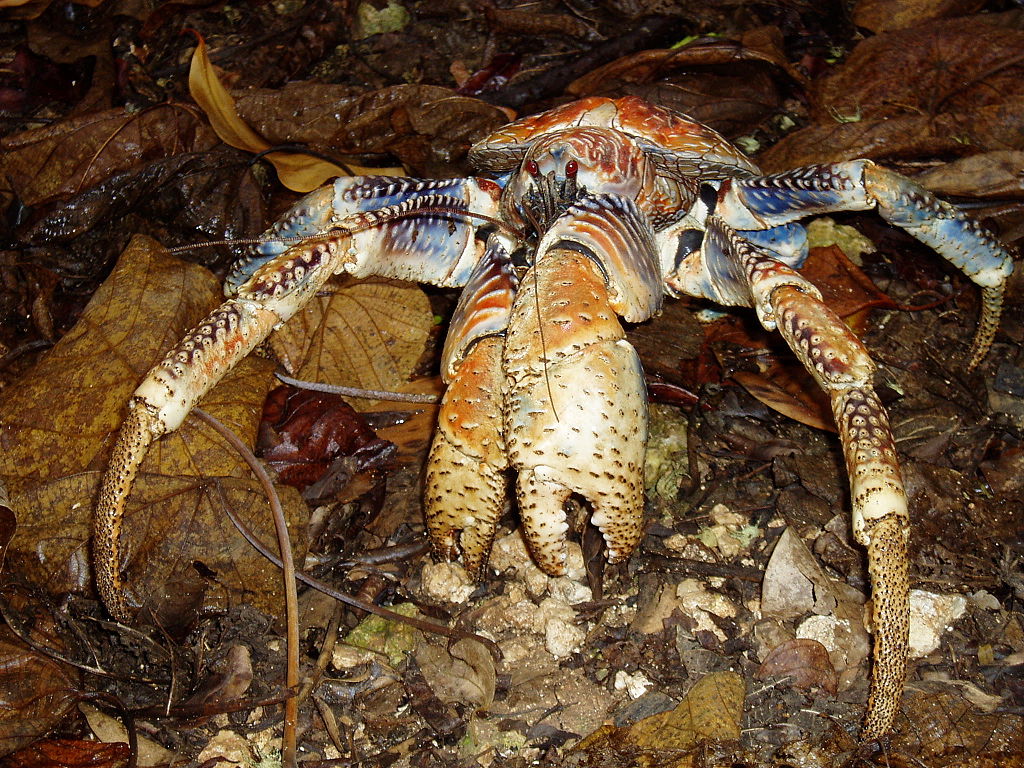
A coconut crab (Birgus latro ) on Christmas Island, an Australian Territory in the Indian Ocean . | Source: Rebecca Dominguez/ Wikimedia
Poking around on the beach, you may have encountered a hermit crab — a typically petite crustacean whose home is the shell it carries around on its back. Now imagine that tiny crab grew bigger and bigger until it could no longer find a large enough shell. With no means of defense, it develops a thickened, hardened exoskeleton and sprouts giant claws.
At the end of this transformation, you’d basically have a coconut crab (Birgus latro), a close relative of hermit crabs. A terrestrial species, it can be found on coastlines throughout the Indian and western Pacific oceans. The biggest among them can reach up to 9 pounds, making it the heaviest land-dwelling arthropod in the world.
Scientists in Japan have recently discovered something else remarkable about this colossus of the crustacean world — it has the strongest grip of any living animal. To test this, they rounded up 29 coconut crabs and had them clamp down on a bite-force measuring device. The biggest crab among them, weighing in at around 5 pounds, imparted a force of 1765 newtons. According to PBS Newshour, that would be like a 143 pound man with a grip force of six tons!
Using this as a benchmark, the scientists estimate that the largest individuals of the species would have a grip force of 3300 Newtons. While that’s certainly impressive — one researcher pinched by a test crab for a few minutes described it as “eternal hell” — it’s not enough to unseat the force-generating champ, the saltwater crocodile, whose jaws can clamp down with a whopping 3700 Newtons of force.
So what do coconut crabs do with this monster grip, aside from terrorize other beach creatures? True to their name, they are coconut munchers (although they also scavenge for things like leaves, rotten fruit, tortoise eggs, dead animals, and the shells of other animals). They use their oversized claws to tear off the coconut’s outer husk and break through the exposed pores (dimples on top). The crab then uses its smaller legs to scoop out the coconut’s white flesh.
